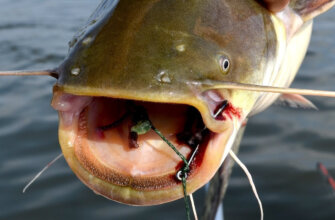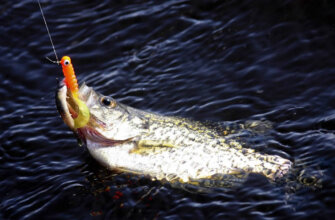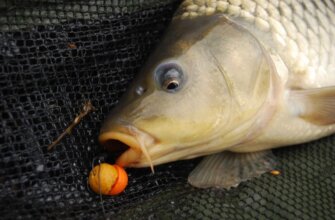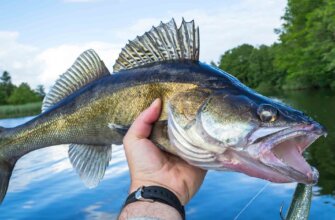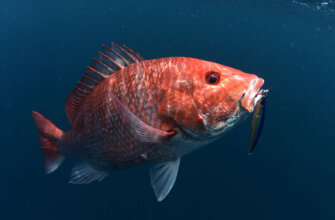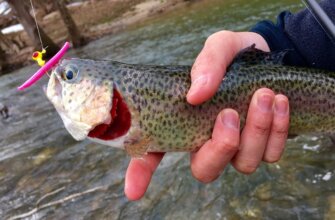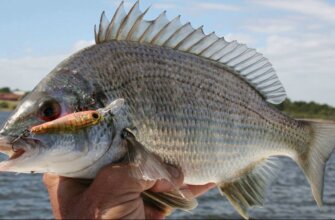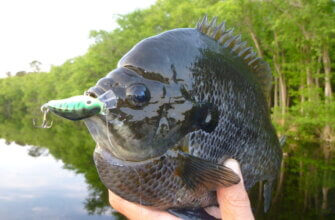When it comes to redfish fishing, there are several effective baits that you can use to increase your chances of success.
Here are some popular baits for redfish:
- Live Shrimp: Redfish are highly responsive to live shrimp. Use a small-sized hook and thread the shrimp onto it. Allow the shrimp to move naturally in the water to attract the attention of redfish.
- Live or Cut Mullet: Mullet is a common baitfish found in many coastal areas where redfish are abundant. You can either use live mullet or cut them into chunks to attract redfish. Hook the mullet through the lips or cut section and let it swim or drift with the current.
- Blue Crab: Blue crabs are a natural prey for redfish, and using them as bait can be very effective. Break the crab in half or quarters and secure it to your hook. Make sure to remove the shell to expose the meat.
- Pinfish or Menhaden: These baitfish are readily available in many coastal areas and can attract hungry redfish. Hook them through the back or lips and let them swim freely.
- Soft Plastic Baits: Soft plastic baits designed to mimic shrimp, crabs, or baitfish are popular options for redfish. Opt for colors that imitate the local forage. Rig them with a jig head or a weedless hook to navigate through grassy or weedy areas.
- Topwater Lures: Redfish can be enticed by topwater lures, especially during early morning or late evening when they are more active near the surface. Use lures like poppers, prop baits, or surface-walking plugs to create enticing splashes and commotion.
Remember that redfish behavior and preferences can vary depending on the region and time of year. It’s always a good idea to ask local anglers or visit a tackle shop in your area for specific recommendations based on the fishing conditions and the habits of the redfish population in your location.
10 Best baits for redfish
Redfish, also known as red drum, are popular game fish that are found along the coastal areas of the United States. When it comes to bait selection for redfish fishing, there are several options that can be effective. Here are 10 top baits for redfish fishing:
- Live Shrimp: Redfish are known to be attracted to live shrimp. Rig them on a hook and present them near the bottom or under a popping cork.
- Finger Mullet: Use live finger mullet as bait, especially when targeting larger redfish. Hook them through the lips or tail and allow them to swim naturally.
- Blue Crab: Redfish love blue crabs, particularly in areas where they are abundant. Cut them into pieces and use them as bait, focusing on scent and movement.
- Pinfish: Live pinfish make excellent bait for redfish. Hook them through the lips or back, and let them swim near the bottom.
- Mullet: Cut mullet can be effective, especially when fishing in areas with strong tidal currents. Use chunks of mullet on a Carolina rig.
- Menhaden: Fresh chunks or strips of menhaden (also known as pogies or bunker) can be enticing to redfish. Rig them on a circle hook and cast them out.
- Gulp! Shrimp: These artificial baits mimic live shrimp and have a strong scent that can attract redfish. Rig them on a jighead or a weighted hook.
- Soft Plastic Jerkbaits: Use soft plastic jerkbaits in natural colors like white, pearl, or silver. Work them slowly and erratically to imitate injured baitfish.
- Topwater Lures: Redfish are known to strike topwater lures aggressively. Use popping plugs, prop baits, or surface walkers to entice them to strike.
- Cut Bait: Cut bait options include mullet, menhaden, or ladyfish. Cut them into chunks and use them on a fish finder rig or a Carolina rig.
Live Shrimp
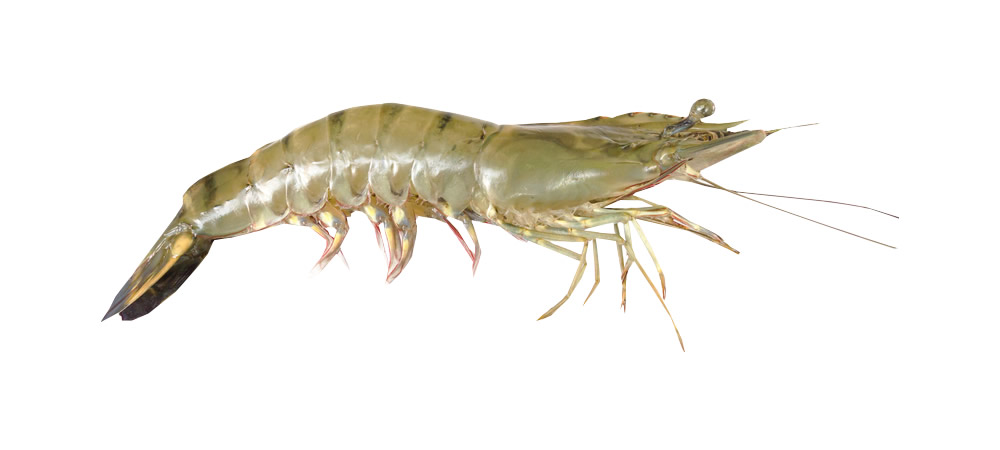
Live shrimp is a popular bait for redfish, as they are known to be attracted to the movement and scent of live prey. Using live shrimp as bait can be an effective strategy for targeting redfish, especially in areas where they are abundant.
When using live shrimp for redfish, it’s important to rig them properly to maximize your chances of success. Here’s a common rigging method:
Hook Selection: Choose a strong and sharp hook appropriate for the size of the shrimp. A size 2/0 to 4/0 circle hook or J-hook should work well.
Hook Placement: Insert the hook through the shrimp’s tail, just below the tail fan. Push it through the tougher part of the tail, making sure not to injure the shrimp too much. Alternatively, you can hook the shrimp under the horn, just behind the head. This method allows the shrimp to swim more naturally.
Weighting: Attach a small split shot or a sliding weight above the hook to help the shrimp sink and keep it at the desired depth. The weight should be light enough to allow the shrimp to swim naturally but heavy enough to keep it in the strike zone.
Leader Length: Attach a fluorocarbon or monofilament leader to your main fishing line. The leader length can vary depending on the water clarity and conditions, but a 12- to 24-inch leader is typically a good starting point.
Casting and Presentation: Cast your bait near areas where redfish are likely to be present, such as grass flats, oyster beds, or structure like docks and jetties. Allow the shrimp to swim freely, or you can gently twitch or reel it in slowly to create movement. Redfish often feed on the bottom, so it’s essential to keep your bait near the bottom where they are likely to be foraging.
Finger Mullet
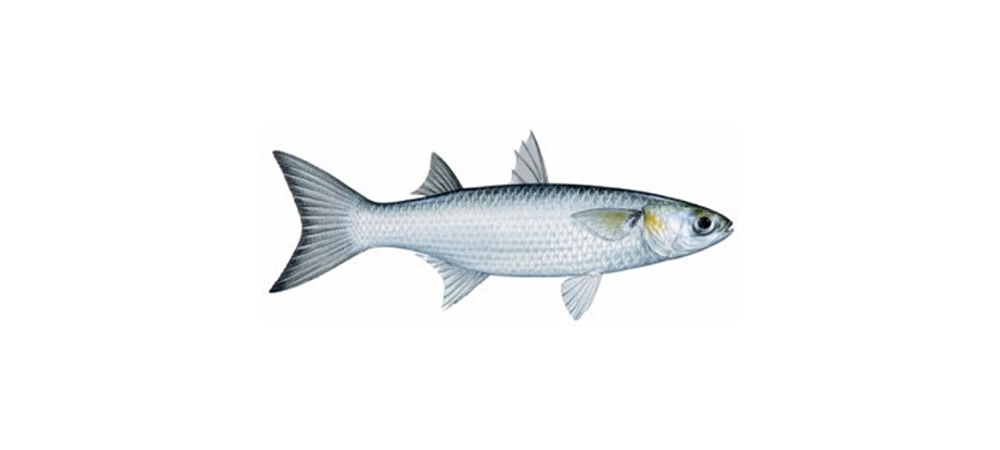
The “finger mullet” is a popular bait used for redfish fishing. Redfish, also known as red drum, are predatory fish commonly found in coastal waters and estuaries. They are known for their aggressive feeding behavior and will readily strike at live bait.
Finger mullet refers to young mullet that are roughly the size of a finger, typically ranging from 2 to 4 inches in length. These small mullet are an excellent choice for targeting redfish because they closely resemble the natural prey of the fish in many coastal areas.
Here are a few tips for using finger mullet for redfish fishing:
Catching finger mullet: You can catch finger mullet using a cast net in shallow water areas near grass flats, sandy beaches, or along the shoreline. Look for schools of small mullet swimming near the surface. Cast the net to capture them and collect them in a bucket with some water.
Hooking the finger mullet: When using finger mullet as bait, you’ll want to hook them through the lips or just below the dorsal fin to keep them lively and natural-looking in the water. Use a size-appropriate hook that matches the size of the mullet and the target redfish.
Fishing techniques: Cast the finger mullet into areas where redfish are known to congregate, such as marshes, oyster bars, mangrove shorelines, or around structures like docks and bridges. Allow the bait to swim freely or use a slow retrieve to mimic injured prey. Redfish are often found in shallow water, so make sure to adjust your fishing tactics accordingly.
Tides and timing: Pay attention to the tides and the time of day when fishing for redfish. They tend to be more active during incoming and outgoing tides when the water movement stirs up baitfish. Early morning and late afternoon are typically good times to target redfish, but they can be caught throughout the day.
Blue Crab

The blue crab is a popular bait choice for fishing, including targeting redfish. Redfish are known to feed on blue crabs, so using them as bait can be effective in enticing these fish to bite. Here are some tips on using blue crabs for redfish fishing:
Freshness: Ensure that the blue crabs you use as bait are fresh. Redfish have a keen sense of smell, and they are more likely to be attracted to a fresh and lively crab.
Size: Choose blue crabs that are an appropriate size for the redfish you are targeting. Ideally, the crab should be large enough to catch the attention of the fish but not so big that it becomes difficult for the redfish to swallow.
Preparation: Remove the claws of the blue crab before using them as bait. This will make it easier for the redfish to bite and hook onto the bait. Some anglers also remove the legs and break the body in half to make it more manageable.
Hooking: Depending on the size of the blue crab, you can use a variety of hooking methods. One common technique is to insert the hook through the back of the crab, just behind the rear swimming legs. This allows the crab to move naturally in the water and appear more enticing to redfish.
Presentation: When casting your bait, try to mimic the natural movement of a blue crab. Allow the crab to settle on the bottom, and then gently twitch the rod to create small movements. Redfish are often attracted to the commotion caused by a crab scurrying along the bottom.
Location: Redfish are commonly found near marshes, estuaries, and flats. Look for areas with submerged vegetation, oyster bars, or rocky structures, as these are popular feeding grounds for redfish.
Pinfish

Pinfish can be an effective bait for redfish, as redfish are known to feed on a variety of small fish and crustaceans. Pinfish are commonly found in coastal waters and estuaries and are a natural prey item for many predatory species, including redfish.
To use pinfish as bait for redfish, you can follow these general steps:
Catch or purchase pinfish: You can catch pinfish using a cast net, a small trap, or a hook and line. Alternatively, you may be able to find them for sale at bait and tackle shops or seafood markets.
Hook the pinfish: Attach a suitable hook to your fishing line. The size of the hook will depend on the size of the pinfish you are using and the size of the redfish you are targeting. Use a hook that is large enough to securely hold the bait but not so large that it hinders the fish’s ability to swim naturally.
Hook the pinfish through the lips or back: Depending on the size of the pinfish, you can either hook it through the lips or through the back, just in front of the dorsal fin. Hooking it through the lips allows for more natural movement, while hooking it through the back may provide better hook-setting opportunities.
Cast your bait: Cast the bait into areas where redfish are likely to be feeding, such as grassy flats, oyster bars, or around structures like docks or mangroves. Redfish are often found in shallow water, so you don’t need to cast too far unless you’re targeting deeper areas.
Monitor your line: Keep an eye on your fishing line for any signs of activity. Redfish typically strike with force and may take the bait aggressively. Once you feel a bite or see your line moving, be prepared to set the hook.
Set the hook and reel in: When you feel a bite or see your line moving, give a firm upward hook-setting motion to set the hook in the fish’s mouth. Once the hook is set, carefully reel in the fish, taking care not to allow slack in the line.
Mullet
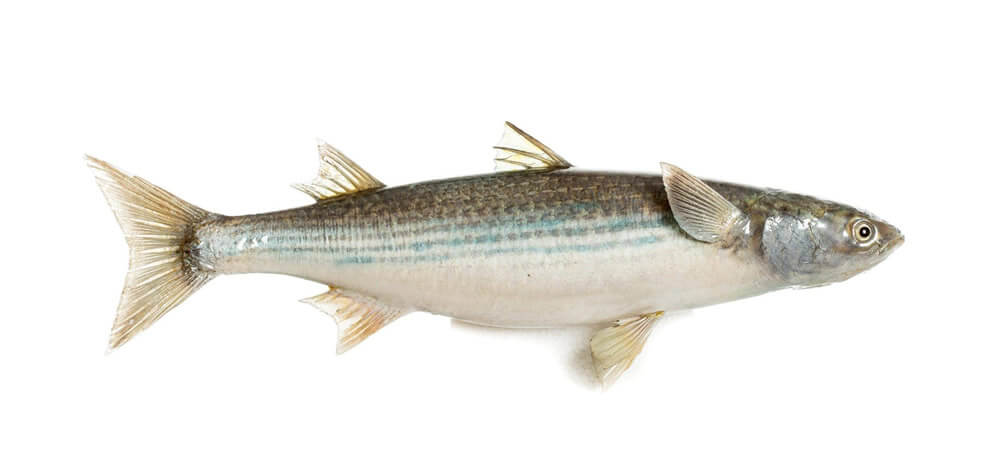
Mullet can be an effective bait for redfish due to its availability in many coastal areas and its natural appeal to these fish. Mullet are a common prey item for redfish, and using them as bait can mimic the natural forage found in the fish’s environment.
Here are some tips for using mullet as bait for redfish fishing:
Freshness: Use fresh mullet whenever possible. Redfish are more likely to be attracted to a lively and odoriferous bait. Freshly caught or store-bought mullet can work well.
Size: Choose the size of the mullet bait based on the size of the redfish you are targeting. Smaller mullet can be used for targeting slot-sized redfish (within the legal size limit), while larger mullet can be used to target larger trophy redfish.
Hook Placement: Hook the mullet in a way that allows it to swim naturally. You can use a variety of methods, such as running the hook through the mullet’s lips, nostrils, or tail section. Experiment with different hook placements to see what works best for the particular fishing conditions.
Rigging: Consider using a Carolina rig or a simple fish-finder rig when fishing with mullet for redfish. These rigs allow the mullet to swim naturally while providing a secure hook setup.
Presentation: When casting the mullet bait, aim to present it in areas where redfish are likely to be feeding, such as around oyster beds, grassy flats, or near structures like docks or jetties. Look for signs of feeding activity, such as mullet jumping or baitfish schools.
Menhaden

Menhaden are indeed a popular bait fish used for redfish fishing. Redfish, also known as red drum, are predatory fish that are found in coastal areas and estuaries along the Atlantic coast of the United States and the Gulf of Mexico. Menhaden, a type of oily fish, make excellent bait for redfish due to their scent, oil content, and availability.
Here are some key points to consider when using menhaden for redfish fishing:
Availability: Menhaden are often available as frozen bait or can be purchased fresh from bait shops. They are commonly sold in the form of whole fish, fillets, or chunks.
Rigging: When using menhaden as bait, you can rig them in various ways. One popular method is to cut the menhaden into chunks or strips and thread them onto a circle hook. This allows the scent and flavor of the bait to disperse in the water, attracting redfish.
Chumming: Menhaden can also be used for chumming, which involves creating a scent trail to attract fish. You can grind or blend menhaden into a slurry and scatter it in the water to attract redfish to your fishing spot.
Live bait: If you have access to live menhaden, they can be an excellent choice for targeting larger redfish. Hook them through the lips or behind the dorsal fin to keep them alive and swimming naturally.
Artificial lures: Menhaden-scented soft plastic lures, such as paddle tails or swimbaits, can be effective for imitating the appearance and scent of menhaden. These lures can be cast and retrieved to mimic the movement of injured or fleeing baitfish.
Gulp! Shrimp

Gulp! Shrimp can be a highly effective bait for redfish fishing. Gulp! Shrimp is a type of soft plastic bait that is designed to mimic the appearance and scent of real shrimp.
Here are a few tips for using Gulp! Shrimp for redfish fishing:
Choose the right size: Redfish can vary in size, so it’s important to select the appropriate size of Gulp! Shrimp to match the fish you’re targeting. Smaller shrimp imitations are suitable for juvenile redfish, while larger ones are more appealing to adult redfish.
Rigging options: There are several ways to rig Gulp! Shrimp for redfish fishing. One popular method is to use a jighead with a weighted hook. This allows you to cast the bait and work it effectively through the water column. Another option is to rig the Gulp! Shrimp on a weedless hook, which is useful when fishing in areas with heavy vegetation or structure.
Presentation technique: Redfish often feed near the bottom, so it’s important to present your Gulp! Shrimp in a natural and enticing manner. Cast your bait to the target area and let it sink to the desired depth. Then, retrieve it with slow, subtle movements, imitating the natural motion of a shrimp. Vary your retrieve speed and experiment with different patterns until you find what works best.
Soft Plastic Jerkbaits
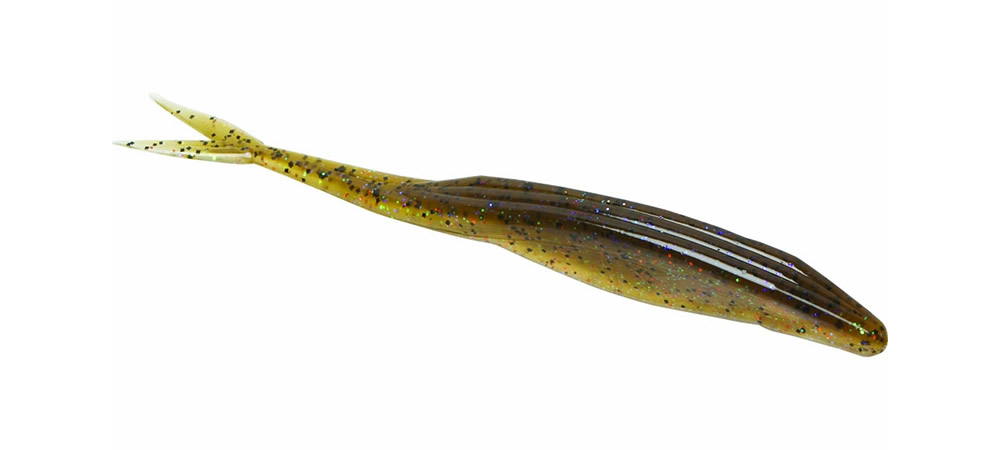
Soft plastic jerkbaits are a popular and effective choice for targeting redfish. Redfish are known for their aggressive strikes and willingness to chase down bait, making jerkbaits a great option to imitate injured or fleeing baitfish. Here are a few recommendations for soft plastic jerkbaits to use when targeting redfish:
Zoom Super Fluke: The Zoom Super Fluke is a versatile bait that works well for redfish. It has a slim profile with a realistic baitfish shape and a soft, supple body that produces lifelike action in the water. The Super Fluke can be rigged weightless, on a weighted swimbait hook, or with a jighead, allowing you to fish it at various depths and retrieve speeds.
DOA C.A.L. Jerk Bait: The DOA C.A.L. (short for “C.A.L. Airhead”) Jerk Bait is specifically designed for saltwater fishing and is a favorite among redfish anglers. It features a slender body with a tapered tail and a paddle-like design that creates a realistic swimming action. The C.A.L. Jerk Bait works well when rigged weedless or on a jighead.
Z-Man DieZel MinnowZ: The Z-Man DieZel MinnowZ is a durable and buoyant soft plastic jerkbait that excels in saltwater environments. It has a segmented body and a split tail that provides enticing action in the water. The buoyancy of the bait allows it to be fished slowly near the surface or rigged with a weighted hook for deeper presentations.
Berkley Gulp! Jerk Shad: Berkley Gulp! baits are infused with scent, making them highly attractive to redfish. The Jerk Shad has a realistic baitfish profile with a split tail that produces a lifelike swimming action. The scent dispersion and soft texture of the Gulp! baits often result in more strikes and longer-lasting bait compared to traditional soft plastics.
Topwater Lures

When it comes to targeting redfish, topwater lures can be highly effective and exciting to use. Here are some popular topwater lures that are commonly used for redfish:
Heddon Super Spook Jr.: This is a classic topwater lure that imitates a wounded baitfish. It creates a lot of noise and commotion on the water’s surface, attracting the attention of hungry redfish.
Rapala Skitter Walk: The Skitter Walk is a popular walk-the-dog style lure that mimics a fleeing baitfish. Its side-to-side action and realistic appearance make it a great choice for redfish.
MirrOlure Top Dog: The Top Dog is another walk-the-dog lure that is known for its ability to entice redfish. It has a realistic profile and produces a rhythmic, side-to-side motion when retrieved.
Zara Spook: The Zara Spook is a legendary topwater lure that has been catching fish for decades. Its zigzag action and unique sound can be irresistible to redfish in shallow water.
Yo-Zuri 3DB Pencil: This pencil popper-style lure creates a popping and spitting action on the surface, imitating a wounded baitfish. It is particularly effective when targeting redfish in calm conditions.
Savage Gear 3D Suicide Duck: This lure is designed to imitate a duckling in distress, making it an excellent choice for targeting larger redfish. It has a realistic appearance and a walking action that can provoke aggressive strikes.
Storm Chug Bug: The Chug Bug is a versatile topwater lure that can be used for a variety of species, including redfish. Its concave face creates a loud popping sound when jerked, attracting the attention of nearby fish.
Cut Bait
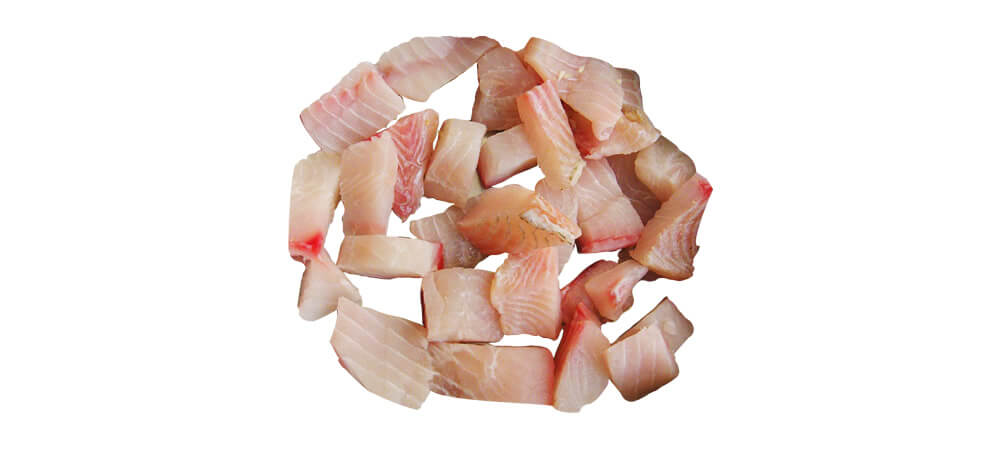
When it comes to catching redfish, using cut bait can be an effective technique.
Here’s a simple guide on using cut bait for redfish:
Select the right bait: Redfish are commonly caught using cut mullet, menhaden (pogies), or other oily fish. These types of bait have a strong scent that can attract redfish from a distance.
Prepare the bait: Cut the bait into chunks or strips that are approximately 2-4 inches long. You can remove the head and tail if desired, but leaving them on can provide extra scent and attract more fish.
Use the right tackle: For redfish, a medium to heavy spinning or baitcasting rod and reel setup is recommended. Use a leader with a test strength of at least 20-30 pounds to handle the potentially larger redfish.

